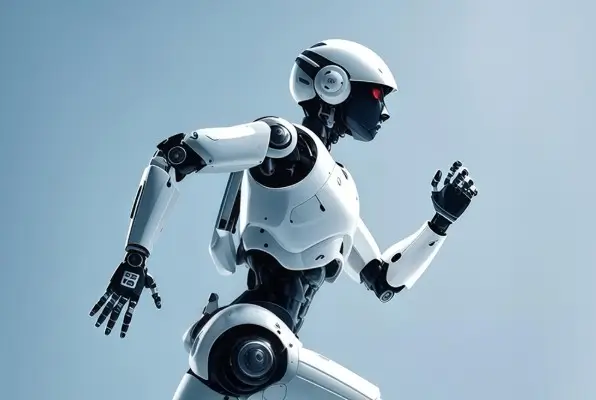Imagine a tiny, yet powerful component capable of transforming raw mechanical energy into finely controlled motion — that’s the gear motor. These compact powerhouses serve as the backbone for countless modern devices, from robotic arms and drones to household appliances and medical equipment. But behind the sleek outer shell lies a complex world of mechanical intricacies, which modern engineers are bringing to life through an innovative tool: the 3D model.

The Evolution of Mechanical Design: From Blueprints to 3D Models
Traditionally, designing a gear motor involved drafting detailed sketches and creating physical prototypes. It was a process rife with trial and error, costly manufacturing, and time-consuming revisions. Enter 3D modeling — a game changer in the realm of mechanical design. Using computer-aided design (CAD) software, engineers can digitally create, visualize, and simulate gear motors in a virtual environment before even touching a physical component.
This leap from 2D sketches to comprehensive 3D models has unlocked a level of precision and flexibility previously unattainable. Engineers can now fine-tune gear ratios, gear tooth profiles, shaft fits, and material properties with incredible detail, ensuring optimal performance and durability. Moreover, 3D models serve as a universal language across industries, fostering collaboration among multidisciplinary teams worldwide.
Why 3D Modeling Matters for Gear Motors
One of the paramount advantages of developing gear motor 3D models lies in their ability to predict real-world behavior accurately. Advanced simulation tools integrated within CAD programs enable engineers to analyze stress distribution, thermal effects, and motion dynamics within the gear assembly. For example, a gear tooth profile can be optimized for minimal wear, significantly extending the component’s lifespan. This predictive capability reduces dependency on physical prototypes, saving both time and resources.
Furthermore, 3D models facilitate rapid prototyping. Once a digital design is satisfactory, it can be exported directly to 3D printers for swift manufacturing of physical prototypes. This seamless transition from design to tangible component accelerates innovation cycles, allowing for iterative testing and refinement without waiting weeks for traditional manufacturing processes.
Digital Twins and Virtual Testing
Another breakthrough in gear motor design is the emergence of digital twins — exact virtual replicas of physical gear motors that operate in real-time. These digital counterparts enable engineers to monitor, analyze, and adjust gear motor performance remotely. For instance, in automation systems, a digital twin can simulate operational stresses, voltage fluctuations, or wear patterns, providing insights into maintenance needs or design improvements.
Virtual testing within the 3D modeling environment also permits engineers to explore extreme conditions — such as high torque loads or rapid acceleration — without risking physical damage. This proactive approach ensures robustness before actual production, reducing costly field failures.
The Rising Popularity of Open-Source 3D Models
In recent years, the maker community and educational institutions have embraced open-source repositories hosting thousands of free gear motor 3D models. These models serve as invaluable learning tools and starting points for hobbyists, students, and startups who may lack the resources for full-scale industrial design. Curious engineers can download detailed models, modify them to suit specific applications, or even 3D print their own gear motors for experimental use.
Such democratization of design accelerates innovation at all levels, fostering a collaborative environment where ideas and improvements circulate freely. Whether you’re a seasoned engineer or an enthusiast, exploring existing 3D gear motor models can be inspiring and educational.
The Intersection of 3D Printing and Gear Motor Development
The advent of high-precision 3D printers has bridged the gap between digital models and physical components. Engineers now iterate gear motor prototypes rapidly by printing intricate parts directly from their CAD files. This process not only shortens development timelines but also allows for creative experimentation with unconventional materials or complex geometries that traditional machining struggles to produce.
Innovative designs, such as gears with customized tooth profiles or embedded cooling channels, become feasible through additive manufacturing. These advancements lead to more efficient, lightweight, and durable gear motors tailored for specialized applications.
Looking Ahead: The Future of Gear Motor 3D Modeling
As technology advances, the role of 3D modeling in gear motor design is set to become even more sophisticated. Artificial intelligence (AI) algorithms will likely play a larger role, assisting in optimal gear configuration and fault prediction. Virtual reality (VR) environments might enable engineers to 3D manipulate gear assemblies intuitively, accelerating ideation.
Another exciting frontier is integrating sensor data and IoT capabilities directly into 3D models, allowing for “smart” gear motors that communicate their health status in real-time. The convergence of 3D modeling, advanced materials, and digital twin tech promises a future where gear motors are not just designed but dynamically optimized throughout their operational lifecycle.
Established in 2005, Kpower has been dedicated to a professional compact motion unit manufacturer, headquartered in Dongguan, Guangdong Province, China.




































